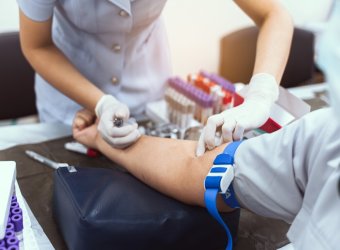10 Common Diseases Among the Elderly That Require Vigilance
(Wellness Center) article author : Admin

Ten Common Diseases Among the Elderly That Require Vigilance
As individuals enter their 50s, the body begins to deteriorate, often leading to the onset of various diseases. Among these, there are ten conditions that warrant close attention, particularly in our parents or elderly relatives, as outlined below:
Brain-Related Diseases
These are frequently observed in individuals with high blood pressure, diabetes, obesity, heart disease, stress, lack of exercise, or a history of smoking. Other contributing factors include the degeneration of brain cells or a family history of brain-related diseases, particularly among those over the age of 60. Common conditions include strokes, Alzheimer’s disease, dementia, and cerebrovascular disease.
Gout
Gout is more commonly found in older men than women, causing joint pain due to an excessive accumulation of uric acid, particularly in the joints. Factors include varying levels of uric acid in the blood across different age groups. For example, premenopausal women tend to have higher uric acid levels than others. Consuming foods rich in purines, such as duck, chicken, organ meats, and legumes, significantly contributes to the excessive build-up of uric acid.
Diabetes
Diabetes is a metabolic disorder caused by insufficient insulin production, leading to elevated blood sugar levels. Symptoms include frequent urination, excessive thirst, fatigue, unexplained weight loss, and potential complications such as blurred vision, blindness, kidney deterioration, numbness in extremities, and an increased susceptibility to infections.
Urinary Tract Disorders
Older men often suffer from an enlarged prostate gland, which compresses the urethra, causing difficulty in urination, frequent urination (particularly at night), and incomplete emptying of the bladder, increasing the risk of urinary tract infections. Elderly women may experience urinary incontinence due to neurological issues, psychological factors, or abnormalities in the bladder or urinary tract, such as obstructions, infections, or weak sphincter muscles.
Osteoarthritis
Knee osteoarthritis is twice as common in older women than in men and is often attributed to prolonged use, excessive weight-bearing, or past heavy physical activity. Symptoms include joint pain, swelling, stiffness, or abnormal leg curvature, particularly in individuals with a history of intense sports or significant weight gain, which accelerates joint degeneration.
Osteoporosis
This condition, commonly affecting postmenopausal women, involves a reduction in bone density, making bones thinner and more prone to fractures. Symptoms include tooth sensitivity due to cracks, dental decay, loss of height, hunched posture, abnormal outward bowing of the legs or knees, joint pain, and frequent pain in the spine, hips, and wrists.
Eye Diseases
Common eye conditions among the elderly include age-related macular degeneration, cataracts, glaucoma, and vitreous degeneration. These arise from various causes, predominantly age-related degeneration, leading to impaired vision. Any abnormalities in vision should prompt an immediate visit to an ophthalmologist for accurate diagnosis and appropriate treatment.
Kidney Disease
In its early stages, kidney disease often presents no symptoms. However, as kidney function declines, waste products accumulate, leading to symptoms such as fatigue, swelling, shortness of breath, and high blood pressure. Advanced stages can result in chronic kidney failure, characterised by symptoms like anaemia, itching, loss of appetite, and, ultimately, the need for dialysis, haemodialysis, or kidney transplantation.
Hypertension
Normal blood pressure ranges from 120/80 to 139/89 mmHg. Readings above this threshold indicate hypertension, which often presents without symptoms. However, in some cases, individuals may experience palpitations, headaches, dizziness, or blurred vision. Untreated hypertension can lead to severe complications such as stroke, blindness, kidney failure, and heart failure.
Ischaemic Heart Disease
This life-threatening condition is caused by narrowing of the coronary arteries and is prevalent among individuals with diabetes, hypertension, smoking habits, central obesity, lack of exercise, or a family history of heart disease. Key symptoms include chest pain or pressure in the central chest or upper abdomen, often radiating to the neck, jaw, or inner left arm, along with breathlessness. Additional signs may include sweating, cold extremities, dizziness, fainting, fatigue, and palpitations. Immediate medical attention is critical for chest pain to ensure timely diagnosis and treatment.
By staying vigilant and seeking timely medical care, many of these conditions can be managed or prevented effectively.

















